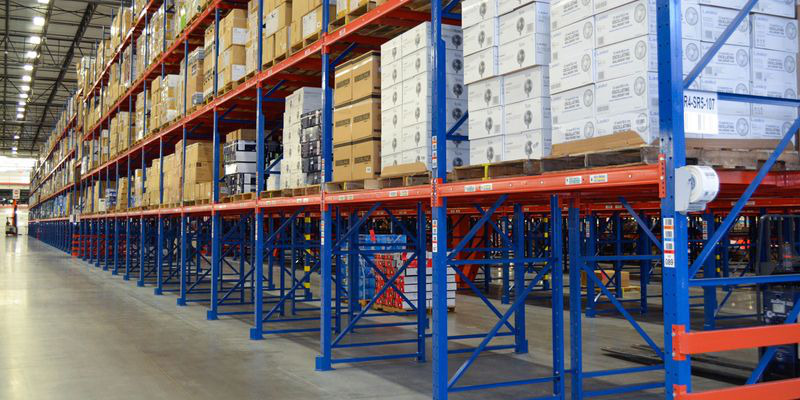
Something you see every day in your warehouse, a rack that you move products to and take products from, but do you know the components of the rack and what makes it be able to hold so much weight while only weighing a fraction of that weight itself? In this blog we will dive into the basics of what goes into making a simple racking system to help you understand why a rack has its parts and what do they do to help bear the weight of the products being stored.
The Two Major Components
A racking system has two major components the uprights and the shelf beams. Everything else will rest on these two components and their layout will depend on multiple factors.
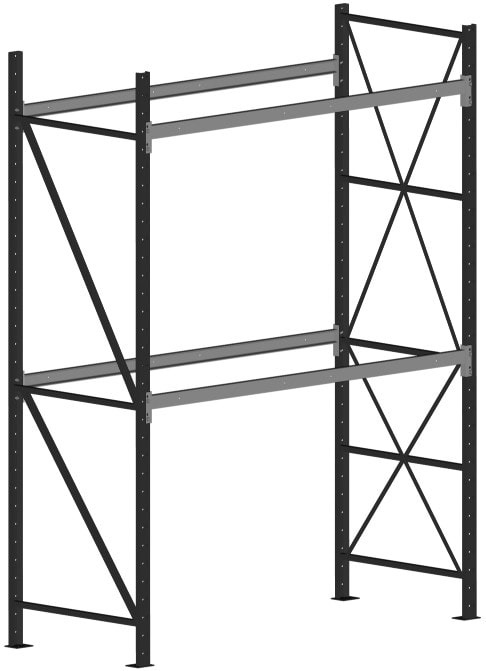
Upright Frame
The first and most critical component of a rack is the upright frame or uprights. These are the cornerstones of the racking system as they bear all the weight of the product that is being stored on the racks. The upright frame is composed of two columns that carry the axial or the vertical load of the pallets along with a base plate.
They usually come in two types of materials, rolled steel or structural steel. Rolled steel is cheaper but holds less weight while structural steel is stronger and can hold more weight but is more costly because it uses more steel in the construction. The type of material being used for the uprights depends on what is being stored, which is why you never want to put a large pallet on a rack that was not constructed to bear that weight as it may be too heavy and may compromise the structure of the rack.
The uprights can be braced to hold more weight by using diagonal braces and depending on the weight the configuration of the brace may change to account for this. Of course, the more brace and materials used the more costly it becomes so it is important to design around the loads being stored to make the most efficient use of the uprights’ load capacity.
Shelf beams
Uprights come with holes spaced evenly along the beam where you can attach the horizontal beams or shelf beams. The shelf beams hold the actual pallet or product and, depending on the size of the product, the beam can vary in size and spacing. Typically, the shelf beam is sized to hold at least two standard pallets of product side by side and this can vary depending on how the product is stored and the method of picking product.
The pallets that are stored on the ground level can be on shelf beams as well depending on whether the rack is configured for the use of straddle or reach trucks. If it is made for a straddle or reach truck application, then it may have a ground-level shelf beam that stores the pallets above the ground to accommodate the outriggers of the trucks. This allows you to fit more pallets in your warehouse because if you do not have a ground-level shelf then the clear bay opening (the space between upright frames) must be increased to accommodate the outriggers of the truck therefore you would have less product density in your warehouse. The trade-off for this is that all your product will be raised up higher which may come into consideration if you have a high amount of shelf levels or if you have a limited amount of height space.
What Decides the Racking System Layout?
A racking system is specially designed for a warehouse’s product and depending on what is being stored in that warehouse, this can change dramatically. Therefore, it is important to know these three things before our Warehouse Solutions expert can help you design a racking system: The area where the racks will be in, the product being stored, and the method of product handling.
The Racking Area
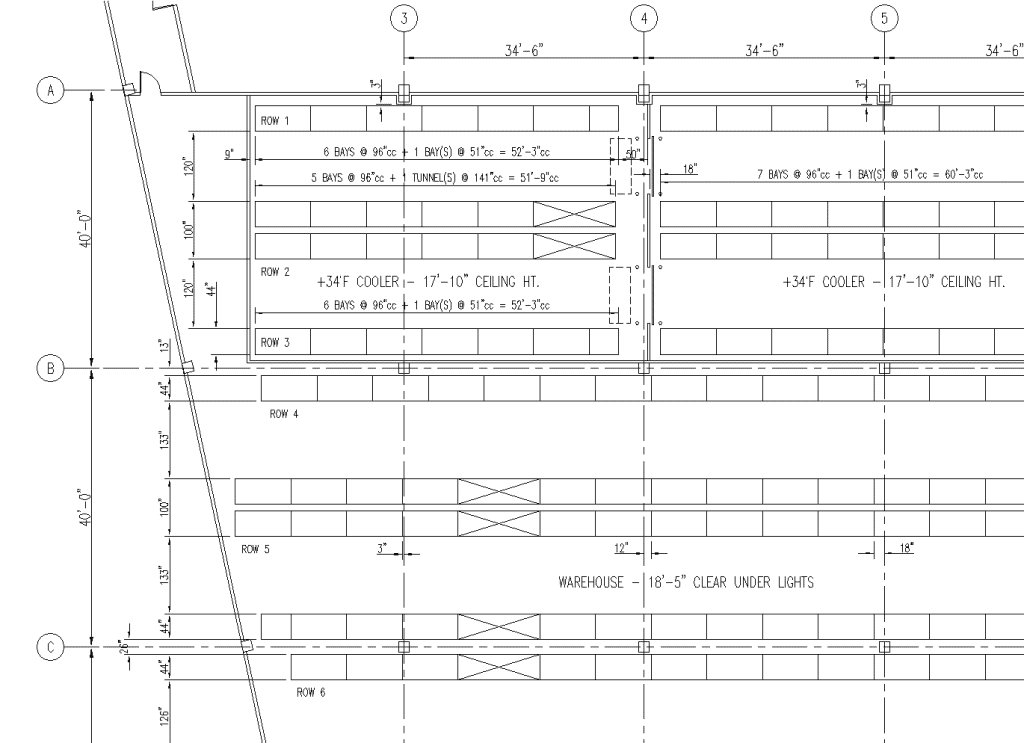
The area where the racking system will be located is key to knowing what you can put on a rack and how it will be designed. If you have a lot of space, you can add different types of racks that allow you to pick products differently with more efficiency. An example of this would be Frazier’s Ergo Series beams which splits a ground-level beam into two that allows a 16-22″ opening between the pallets to let an order picker be able to access rear products on a pallet.
However, if you are short on space, you can opt-in for a more product-dense pallet storage solution such as a glide-in push-back racking or a pallet mole system that allows you to store more product in a smaller area at the cost of less selective picking.
The Product Being Stored
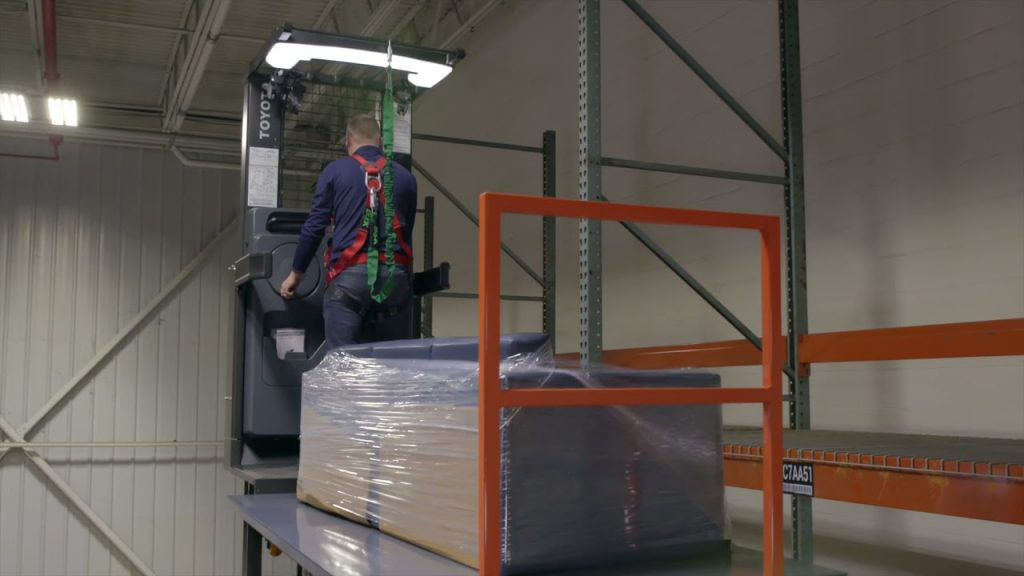
You cannot have a pallet system without products to store in it. Therefore, the products being stored are an important consideration that you need to know before looking for a racking system. If you store individual small products, you might be interested in Frazier’s SelecDeck Case Flow Rack that allows small individual cases to be stored and picked easily. If you have a standardized 48” pallet, you might just want a regular selective pallet rack while larger products with unknown sizes may want a Cantilever style racking that allows any product length. This is also important if you are planning to store multiple different types of products in the same racks as you will need to account for the different load weight, size, and product distribution.
The Method of Product Handling
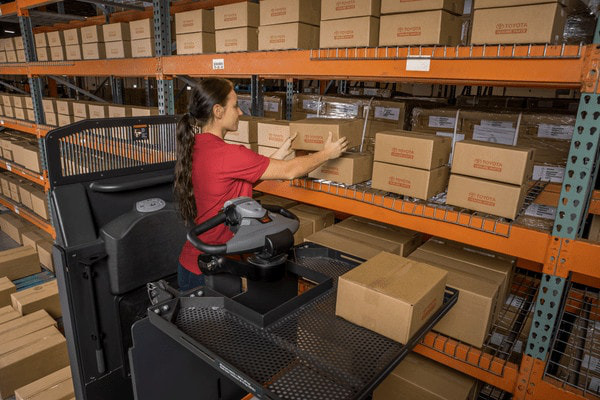
The last and equally important consideration is the method of handling the product. This usually involves a forklift or pallet jack as you will need to store the product when you receive it from a truck and then select the product when you want to ship it out. The way you handle your product can change the layout of the racking significantly since you can change the aisle width, rack depth, and type of racking to accommodate this. If you are picking individual boxes off a pallet with an order picker, you may be able to shrink the aisle width down to accommodate the order picker and therefore allow more product density and product selectivity in your warehouse. If you are using a reach truck, then you may want a deeper rack that allows you to store products in a 2 pallet deep rack which allows you to fit more pallets in a small amount of space. If your product moves in and out of the warehouse very quickly, then you may want to consider a drive-in or drive-thru rack which allows a higher capacity of storage space at the cost of less selection with a mindset of First-in, First-out inventory control.
Racking Accessories and Options
Now we have covered the basics of a rack you will want to discuss the accessories and options that are available to you. These may help increase the safety and integrity of the racking system or increase the throughput of your warehouse.
Here are a few examples of some basic accessories for your rack and what they do:
- Wire Mesh: Wire mesh can be placed on shelf beams to provide the flexibility to store cartons, drums, and multiple pallet sizes. These are usually designed with a “waterfall” front and rear to keep them in place on the shelf.
- Pallet Support: Pallet supports are required when a pallet overhang (the difference between the load size and the frame size if the load is larger and “overhangs” into the aisle) is less than 2”. The support is designed to bear the full weight of the pallet to help make sure the pallet does not fall through the shelf beams.
- Back-stops: The back-stops does what its name says, it stops pallets from going too far in the back of the rack. This helps protect the racks as they are flexible and typically bend when abused, stopping the pallet from hitting the rack behind it or the wall.
- Row End Protectors: The Row End protectors help provide protection from collision from forklift damage at the end of the aisle where it is needed most. This helps increase safety as racks are very vulnerable at the end of the aisles where forklifts go in and out of.
- Back-to-Back Ties: The Back-to-Back ties connect two racks together to give it more stability and abuse resistance. A back-to-back tie is required for every 10’ of height or at least two back-to-back ties if your rack is under 20’. The ties are at a minimum of 6” because of the minimum flue space but may change depending on the system and fire code. The back ties are sometimes bolted to the wall if you have a rack next to a wall.
Many other racking accessories are available depending on the layout and needs of the racking.
Need help designing a racking system for your warehouse? Reach out to Summit Handling Systems and we can help you figure out everything your racking system needs to be the most time and cost-efficient for your warehouse.
